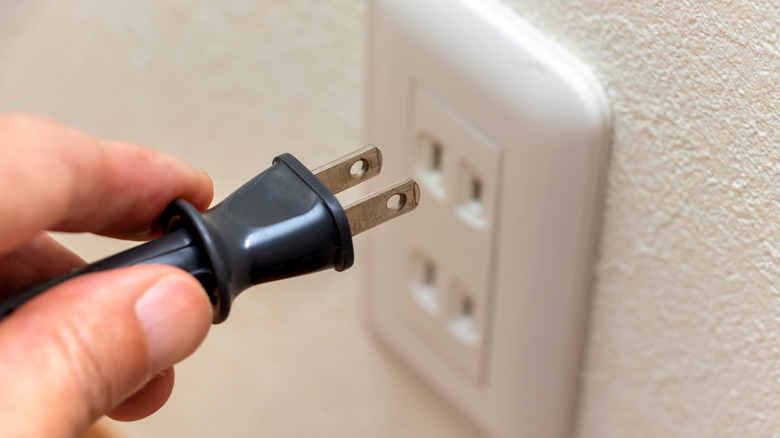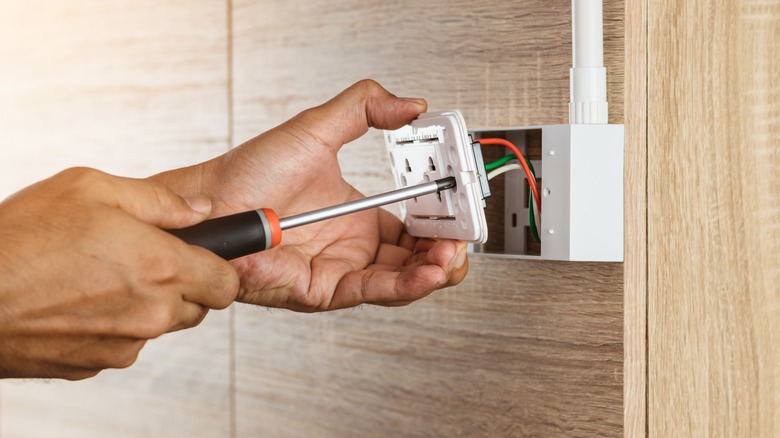What Are The Holes In A Plug Used For?
Electrical plugs and outlets are everywhere. From our refrigerators to smart cars and even the device that you're reading this article on right now (whether it's currently plugged in or operating via a recently charged battery), we rely on plugs and outlets to power our daily lives. It's no wonder that according to the U.S. Energy Information Administration, the average American household uses 893 kWh of electricity per month.
When an object becomes so commonplace, it's easy to overlook its little quirks. After all, none of us has the time to question every little detail in our busy lives. But have you ever wondered why plugs have those little holes towards the end of each prong? Have you come across a plug without holes (they do exist!) and wondered what's going on? While you can rest assured that the holes don't actually make a difference in regards to safety (via Homex), their actual purpose seems to be widely debated.
The old ball and grip
The most common answer tends to be that the holes in each prong help to keep the plug locked into the outlet. Unfortunately, that is not correct. It's easy to find a list of sites that claim outlets have a ball mechanism that fits into the holes to provide a secure grip, but a quick evaluation of outlets proves that's not the case.
In a very insightful YouTube video, Alec of Technology Connections breaks down four different wall sockets in a quest to find this mythical ball, coming up short every time. He notes that, while some sockets do have a design that could grip the hole in theory, they do so before the prongs are fully inserted. If we were to rely on this feature for extra grip, we'd be increasing the risk of fire and electrocution. Surely, the trade-off wouldn't be worth it.
Instead, Alec theorizes that the holes make it easier to produce a large quantity of plugs along an assembly line. By stringing the prongs along an alignment rod, the rest of each plug could be assembled relatively easily. While this is just a theory, it makes sense. Who wouldn't want to save a few bucks (and a lot of aggravation) while assembling their product? But that still didn't answer the question of why the holes in every plug all look exactly the same regardless of their manufacturer. Wouldn't different companies have slightly different designs?
Standardization
All electrical outlet manufacturers in North America must follow regulations governed by the National Electrical Manufacturers Association (NEMA). According to Technology Connections, NEMA has very strict requirements on the location and size of an electrical prong's holes, though the holes themselves are not mandatory. As it turns out, this firm regulation is the product of copyright battles early on in the two-prong outlet's life.
According to Solid Smack, in 1913, Harvey Hubbell patented the first plug design in America — a two-prong mechanism with half-circle indents on each side. As is frequently the case, other inventors saw the idea and tried to make their own plug designs, one of which featured round circular holes on the end of each prong, much like the plugs we have today. Eventually, the government realized that it would be dangerous to have too many different designs. After all, poor connections could lead to electrical hazards and make it hard for consumers to figure out which design they should install. In the process of consolidating the different designs, NEMA chose to approve the circular holes, making them the mainstay for all future electrical plugs.


